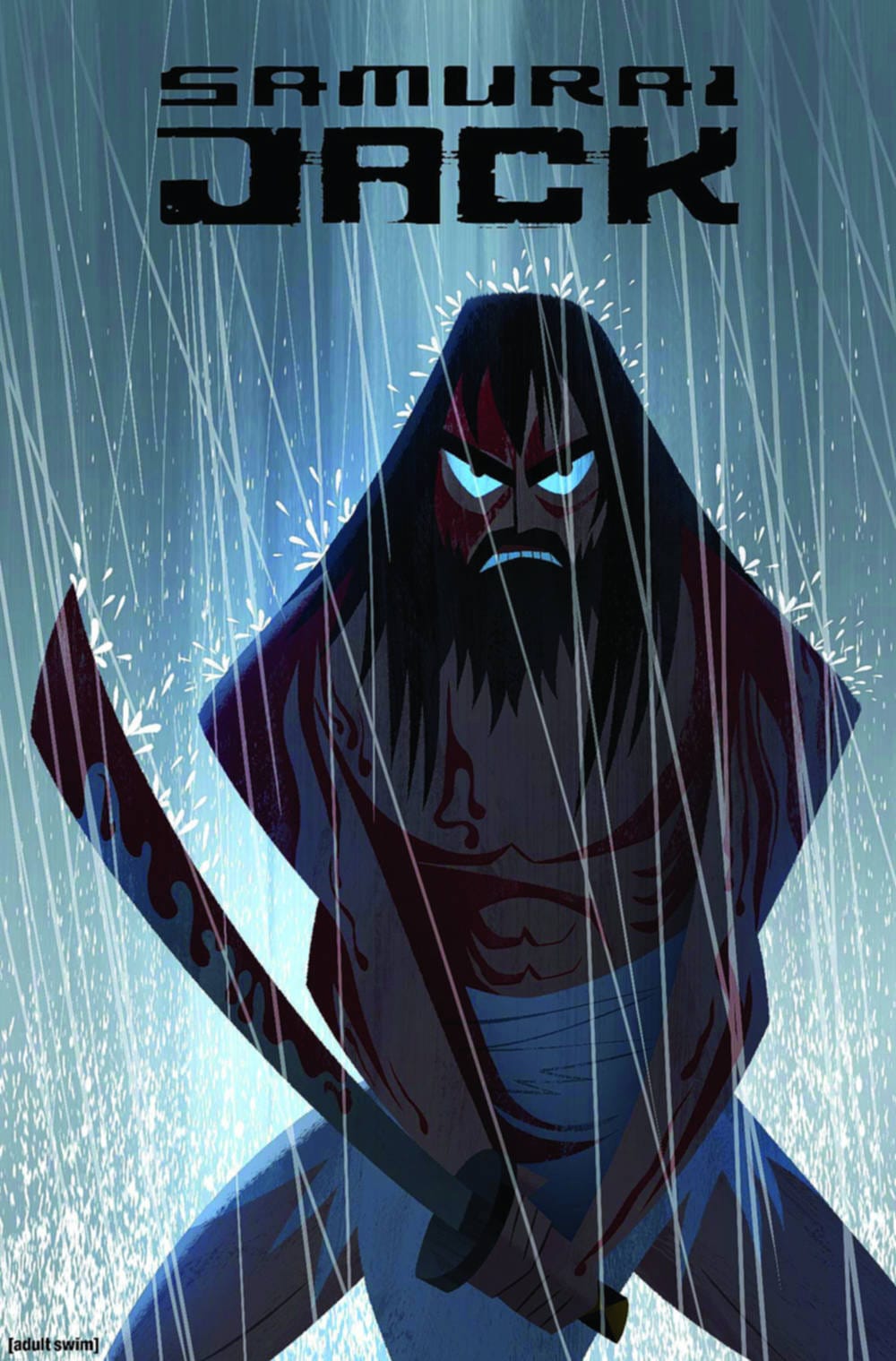Jack’s back | Samurai Jack
Time doesn’t heal all wounds

After an 11 year hiatus, cult-classic Samurai Jack makes a long awaited return to our screens. Wandering samurai Jack is still locked in an uphill battle against the demon Aku, and still stuck in a hellish future spawned from him. Genndy Tartakovsky’s aesthetic delight begins in media res, as had become a staple of the show’s original run. An opening monologue helpfully informs us that 50 years have passed since Jack was thrown into an unfamiliar future, and in that time he has not aged. Not physically, at least.
The Jack we find ourselves following now is a shell of his former self, haunted by his continuing failure and the spectres of his past, all while still half-heartedly continuing the struggle against Aku. Tartakovsky’s signature blend of beauty and terror works to great effect once more here, with the seamless transitions of environment into Jack’s hallucinations excellently portraying his fragile mental state.
Advances in technology mean that the art in general feels crisper, and the colour pallet is more vibrant. This allows the series’ minimalist, yet potent, feel to shine like never before. Jack’s revamped design is imposing and refreshing. Immediately, the new armour, bike, and guns generate intrigue and hook new and old viewers alike. Thematically, the armour shows us that this is not quite the Jack we used to know. The increased reliance on technology acts as a crutch, revealing that even though physically he remains unchanged, psychologically he has grown weary.
Narratively, Samurai Jack seems to have evolved to keep pace with its audience. The traditional, self-contained episode structure is cast off to instead opt for a season-wide arc. Parallel to Jack’s adventures, we also follow seven young girls being trained by a cult to hunt down and kill Jack. This sets up what is likely to be one of the major plot lines of the season, and gives us an additional POV character in the form of the assassin, Ashi.
Her journey and introduction in this episode are a dark mirror to Jack’s own. We are given glimpses of what she could be without her conditioning, and it seems as if her perspective will allow for an interesting exploration of how world views and perceptions can shape us. The episode also sets up a bundle of narrative threads that will hopefully come to fruition throughout. The audience is enticed by the mystery of Jack’s missing sword, as well as wondering how the world has changed in 50 years.
Additionally, the series also seems unafraid to tackle more mature themes this time around. It takes unflinching looks at Jack’s guilt and the nature of his hope and despair. After 50 years, the cracks are beginning to show. Series creator Tartakovsky has implied that this season will be an exploration of the hero’s journey. More specifically, the creators hope to explore what happens to the hero as their journey begins to stall.
The comedy and creativity of the series are as lively as ever, with the introduction of a musical robot assassin based on Sammy Davis Jr. Voiced by veteran voice actor Tom Kenny, the robot provides a fascinating temporary distraction. He serves as a perfect counter-balance to the episode’s darker aspects. The brief moments of comedy shine because of their absurdity. One notable omission from the episode is Aku’s presence (save for a small cameo). Again, this adds to the sense of mystique and, in addition, creates an anticipation that is likely to keep people coming back. Granted, this may have more to do with original voice actor Mako’s unfortunate passing. All in all, the latest episode is a worthy continuation of the series and deftly builds expectations for the rest of the season.









